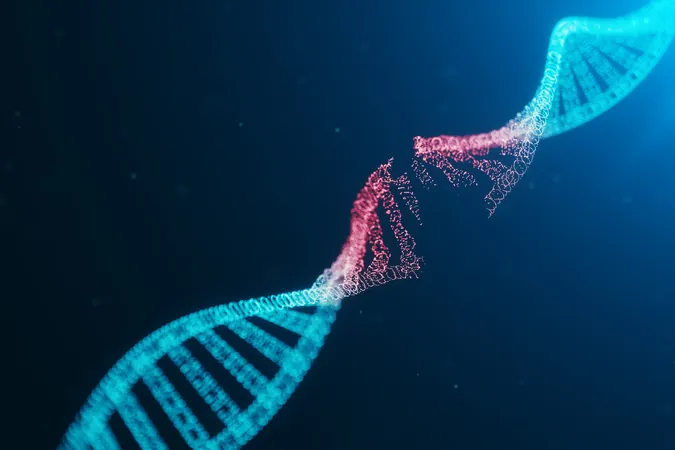
Revolutionizing Cancer Prognosis: The Power of AI in Understanding Somatic Mutations
2025-07-30
Author: John Tan
Unleashing AI in Cancer Treatment
In a groundbreaking revelation at the AACR Special Conference on Cancer Research, Dr. John-William Sidhom from Weill Cornell Medicine unveiled an innovative use of large language models (LLMs) to decode the complex relationship between somatic mutations and cancer outcomes. Imagine a tool that not only assesses how a patient's genetic mutations influence their cancer prognosis but also predicts their response to treatments!
Filling the Gaps in Precision Medicine
Current cancer treatment often grapples with incomplete data from next-generation sequencing (NGS) reports, where many results remain unexplained. Dr. Sidhom identified a crucial challenge: existing therapies targeting single genomic drivers might overlook simultaneous mutations that complicate treatment responses. His ambitious aim was to enhance precision medicine by leveraging AI to analyze these intricate genetic patterns.
Innovative Model Design
Dr. Sidhom's pioneering model incorporates a dual-attention architecture, allowing it to grasp the biological significance of mutations. By embedding each mutation in context and masking altered sequences, the model learns the 'grammar' of cancer mutations. This advanced framework turns complex interactions into comprehensible insights.
Major Data-Driven Breakthroughs
Initially trained on data from The Cancer Genome Atlas, the model reviewed over 3 million somatic variations from more than 10,000 patients across 33 cancer types. Further analysis included data from the BeatAML2 study, focusing on acute myeloid leukemia, to explore genomic indicators impacting responses to immunotherapy.
Predictive Power Demonstrated
The model’s prowess shone through with impressive predictive capabilities, identifying which patients might benefit from specific treatments. In colorectal cancer, for instance, it successfully illustrated the sequential emergence of mutations leading to cancer, reaffirming the Vogelstein model of mutation order. Additionally, it dissected responses to the emerging leukemia treatment cabozantinib, pinpointing patient resistance and sensitivity with remarkable accuracy.
Looking Ahead: A Future of Tailored Cancer Treatments
Dr. Sidhom expressed optimism for continued improvements, stating, “With more data and even more advanced models, we expect to enhance performance substantially.” This innovative approach could herald a new era in cancer treatment, where solutions are as unique as the patients themselves.


 Brasil (PT)
Brasil (PT)
 Canada (EN)
Canada (EN)
 Chile (ES)
Chile (ES)
 Česko (CS)
Česko (CS)
 대한민국 (KO)
대한민국 (KO)
 España (ES)
España (ES)
 France (FR)
France (FR)
 Hong Kong (EN)
Hong Kong (EN)
 Italia (IT)
Italia (IT)
 日本 (JA)
日本 (JA)
 Magyarország (HU)
Magyarország (HU)
 Norge (NO)
Norge (NO)
 Polska (PL)
Polska (PL)
 Schweiz (DE)
Schweiz (DE)
 Singapore (EN)
Singapore (EN)
 Sverige (SV)
Sverige (SV)
 Suomi (FI)
Suomi (FI)
 Türkiye (TR)
Türkiye (TR)
 الإمارات العربية المتحدة (AR)
الإمارات العربية المتحدة (AR)